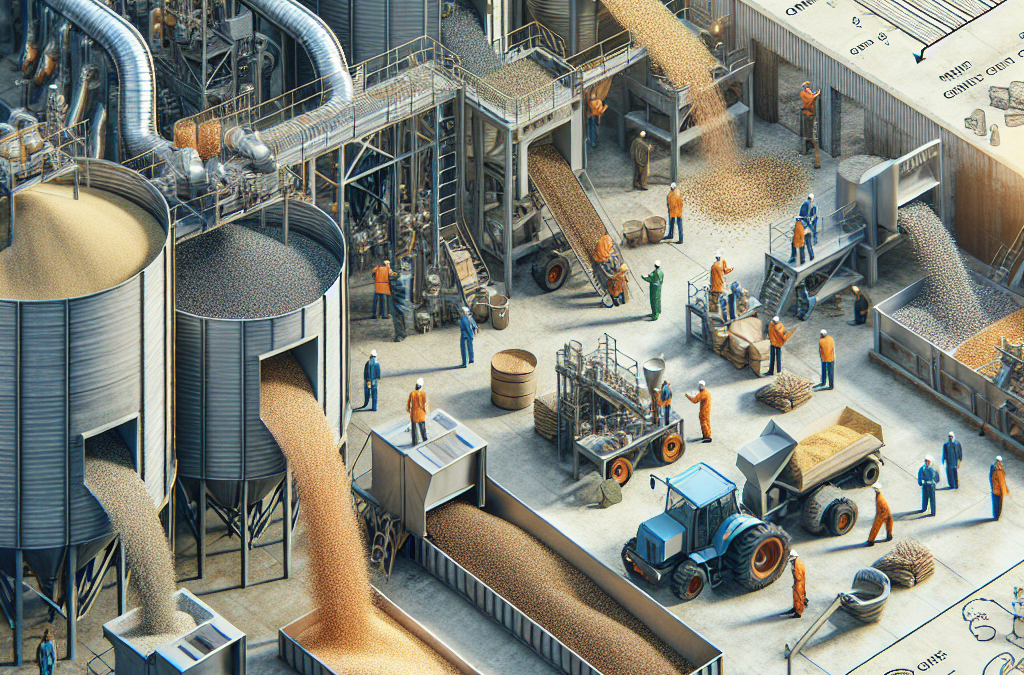Enhancing Shelf Life of Grains
Understanding Grain Decomposition
Let’s kick things off with understanding why grains spoil. Just like that loaf of bread we forget in the back of the pantry, grains can fall victim to spoilage. Moisture and pests are two of the biggest culprits. When grains get wet, they can mold or ferment, leading to waste. My experience shows that proper grain storage can seriously lengthen their shelf life, which is a big win for combating food waste.
To effectively manage this, I’ve found that maintaining ideal humidity and temperature levels is crucial. Keeping grains dry and stored in cool, dark places can make all the difference. Believe me, you don’t want to be throwing away a bag of flour just because it went bad too soon.
Another aspect to consider is rotation—older grains should be used before new ones. I learned this trick in the kitchen and it’s helped me prevent waste significantly. The fresher the grain, the better it cooks, and you’re less likely to throw them out.
Increasing Accessibility
Storage Solutions that Work
We’ve all been there—digging through the pantry trying to find that elusive bag of rice. It’s such a hassle! That’s why proper storage solutions can make a world of difference. In my journey, I’ve discovered that clear containers and labels can help keep things organized, and it encourages you to use what you already have.
Moreover, easy access to stored grains means you’re more likely to incorporate them into your meals. When you can see what you have, you’re less likely to buy duplicates or forgotten items that eventually go bad. I can’t stress how much this little change made me more aware of my own pantry stock.
Whether it’s a dedicated grain storage bin or even a section in your pantry, finding ways to make grains readily available will encourage you to use them instead of letting them sit there unused. It’s all about creating a habit of grabbing them first in your cooking adventures.
Minimizing Pest Infestation
Common Pests and Prevention
Alright, let’s talk pests. Yikes! Nothing is worse than opening a bag of flour only to find you’ve got some uninvited guests. Pests like weevils or moths are notorious for making their way into grain stores. My first suggestion here is to always check your grains before buying. Look for any signs of infestation, and if you see them, skip on that bag.
Once you’ve brought your grains home, the fun doesn’t stop. I like to transfer them to airtight containers as soon as possible. It may seem like a small step, but trust me, it’s been super effective at keeping those pesky critters at bay. Plus, it also helps maintain freshness!
And honestly, regular pantry cleaning can’t be overlooked. I set a reminder every couple of months to clear out my pantry, check for anything outdated, and ensure there are no crumbs laying around that can attract pests. It’s a great way to stay on top of grain management.
Facilitating Better Inventory Management
The Importance of Keeping Records
Let’s chat about inventory management. Sounds a bit boring at first, but it’s actually crucial if you want to reduce food waste. I keep a simple checklist of what grains I have in stock and their expiration dates. It sounds tedious, but it saves me from those “oops, forgot about that” moments.
Get Whole Wheat Flour, Grains and Milling Supplies – CLICK HERE
Having an inventory helps me plan my meals more efficiently too. I can see what I have and what needs to be used soon, turning my cooking into a creative game! It’s made my meal prep habits so much more intentional.
Plus, if you’re a fan of meal planning, you can design your weekly menu around the grains you have on hand. It’s not just about saving the grains; it’s about being resourceful and making the most out of what you’ve got. I can happily say my food waste has significantly dropped since I implemented this!
Supporting Sustainable Practices
Long-term Environmental Impact
So, here’s the part where we chat about the planet. Grain storage isn’t just about reducing waste at home; it’s also about the broader picture of sustainability. The less food we waste, the less demand there is for excessive grain production, which can lead to resource depletion. I’m genuinely passionate about making mindful choices and spreading that awareness.
When I began my journey into grain storage, I noticed how the impact rippled out to the environment. By reducing the food waste I was responsible for, I felt like I was contributing to a larger movement towards sustainability. Every little effort counts!
Moreover, engaging with local communities or farms that focus on sustainable grain practices is another way to amplify this. Purchasing grains from these sources not only encourages better agricultural practices, but also reinforces the importance of mindful consumption in our society.
FAQs
1. How can I store my grains to extend their shelf life?
To extend the shelf life of grains, store them in a cool, dry place in airtight containers. Avoid moisture and pests by keeping them sealed and organized. It’s smart to check them periodically for any signs of spoilage!
2. What pests are commonly found in grain storage?
Common pests include weevils and moths. It’s essential to inspect grains when purchasing and transfer them to airtight containers as soon as you bring them home to minimize the risk of infestation.
3. How do proper storage solutions help reduce food waste?
Proper storage solutions enhance visibility and accessibility, which encourages you to use the grains before they spoil. When you can easily see what you have, you’re less likely to buy duplicates or let items sit unused.
4. Is it necessary to keep an inventory of grains?
Yes! Keeping an inventory helps you track what you have and when it needs to be used. This awareness makes meal planning easier, helping to reduce the chances of food waste.
5. What is the environmental impact of reducing food waste through grain storage?
Reducing food waste helps lessen the overall demand for grain production, which can help conserve resources and protect the environment. Every little step towards mindful consumption can make a difference in promoting sustainability.
Get Whole Wheat Flour, Grains and Milling Supplies – CLICK HERE
Related Content
Auto Amazon Links: No products found.





